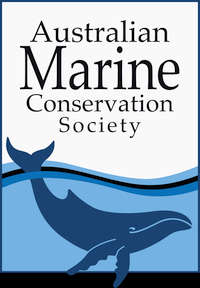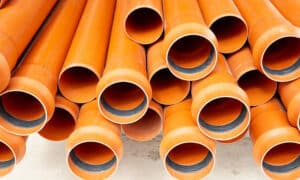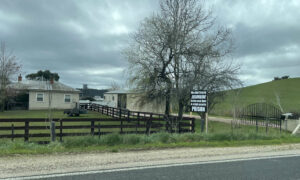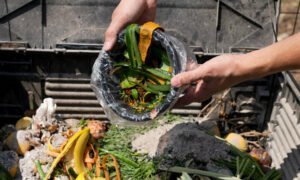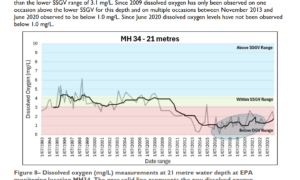Media release – Environment Protection Authority (EPA), 27 June 2024
Dissolved oxygen levels in Macquarie Harbour continue to improve
Environment Protection Authority (EPA) scientists have reviewed long term data to create a status update for dissolved oxygen in Macquarie Harbour.
The report shows a clear trend of improving oxygen levels in the middle and deeper waters of the harbour.
Each graph in the report has been created using statistical analysis of hundreds of data points. Two EPA scientists separately reviewed two independent data sets, the monthly broadscale environmental monitoring program salmon companies are required to undertake, and the EPA’s own quarterly monitoring program which has been in place since 1993, with both data sets showing an overall improvement.
EPA Director, Wes Ford, said “The dissolved oxygen levels are now close to the range observed prior to 2010, when the levels began to decline,”
“The Macquarie Harbour Oxygenation Project has not yet reached its full scale and is unlikely to have had a significant impact upon oxygen levels across the harbour.”
“We can expect to see further improvements in future because environmental licence conditions imposed by the EPA on salmon companies require them to either continue to operate oxygenation equipment after the trial concludes, or to reduce their oxygen demand by other means, such as reducing biomass,” said Mr Ford.
The data used in the report does not include the major recharge event which occurred on 31 May 2024, and is separate to another line of evidence showing improvement that was recently reported by the EPA.
Seabed video surveys at 35m compliance points showed the best consecutive survey results seen since the EPA became responsible for environmental regulation.
Commencing in 2017, the EPA Director progressively cut finfish farming in Macquarie Harbour by half.
Media release – Hydro Tasmania, 28 June 2024
Milestone in science to support Maugean skate
Hydro Tasmania has reached an important milestone in its scientific contribution to the Maugean skate recovery efforts, with the completion of catchment models for the King and Gordon Rivers.
Executive General Manager Assets and Infrastructure Jesse Clark said the models show how water flows through the catchments and into Macquarie Harbour.
“Scientific models can seem a bit abstract but they’re fundamental to knowing how the harbour works, what impacts dissolved oxygen and what we can do to create a healthy environment for the skate.
“We’ve invested significant time and resources in developing the catchment models, which we’ve now handed over to CSIRO, who will incorporate them into a model for the whole harbour.
“We are working closely with CSIRO and understand the harbour model is on track to be ready for the coming summer.”
Hydro Tasmania is a member of the Maugean Skate Recovery Team, working with all stakeholders to help save the endangered skate and delivering its commitments under the State Government’s Conservation Action Plan for the Maugean skate.
The Environment Protection Authority yesterday released data showing the dissolved oxygen levels are now close to the range observed prior to 2010 when the levels began to decline.
“Hydro Tasmania welcomes the news from the EPA that dissolved oxygen levels are improving. We are proud to be part of the collective effort to support the Maugean skate recovery efforts,” Mr Clark said.
“These results are further evidence that working together is contributing to positive outcomes.”
Mr Clark said while the established science shows river flows are not a primary cause of low oxygen levels in Macquarie Harbour, they could be part of a solution.
He stressed river flows would not be a ‘quick fix’ and any actions to change river flows need to be informed by science.
“This is a complex system. It’s not like turning a tap on and off. Pulling the wrong lever at the wrong time could inadvertently make the situation worse.
“And in these extremely dry conditions, we need to make sure that any use of water has the desired impact.”
Media release – Nick Duigan, Minister for Parks and Environment, 28 June 2024
More evidence of improvements in oxygen levels at Macquarie Harbour
The Tasmanian Government welcomes data released by the Independent Environmental Regulator which shows a clear trend of improving oxygen levels in Macquarie Harbour.
Minister for Parks and Environment, Nick Duigan, said EPA scientists have found the dissolved oxygen levels are now close to the range observed prior to 2010 when the levels began to decline.
“These results show the work underway by the National Recovery Team – which includes the Tasmanian Government, the Australian Government, West Coast Council, the salmon industry, IMAS and Hydro Tasmania- is working,” Minister Duigan said.
This latest review follows data released last month that showed the best consecutive results for Macquarie Harbour since reporting commenced in 2016.
“it’s clear that industry and research investment in remediation of dissolved oxygen levels in the harbour, along with EPA regulation of the industry is effective and working,” Minister Duigan said.
“The Tasmanian Government firmly believes that the Maugean skate and the salmon industry can continue to co-exist.
“There is now a comprehensive Conservation Action Plan being implemented to ensure the survival of the Maugean skate, and a comprehensive environmental management framework which is ensuring sustainable salmon farming operations in the harbour.”
The Tasmanian Government, through our 2030 Strong Plan for Tasmania’s Future, has already committed more than $2 million to establish a captive breeding program for the Maugean skate.
Media release – Environment Tasmania, 28 June 2024
Oxygen levels at Macquarie Harbour not as rosy as government claims
Today’s announcement from the Tasmanian government does not provide the complete picture of the oxygen levels within Macquarie Harbour.
“On closer examination of the EPA report, monitoring shows the dissolved oxygen levels within the Central Harbour and south-east section of the harbour located within the World Heritage Area at the mid to bottom layers – the Maugean skate’s habitat – still remain in the ‘red’ zone.” says Rebecca Howarth, Senior Marine Campaigner at Environment Tasmania.
“Improvements have been seen within the north-west section of the harbour (closest to ocean) while low oxygen remains an issue in the south-east World Heritage Area (furthest from the ocean) suggesting a correlation with oceanic recharges that occurred in 2021 and over the last several months.”
“It is misleading for the Tasmanian government to claim credit.”
Monitoring graphs from WHA from EPA Report:
Media release – Australian Marine Conservation Society, 28 June 2024
Maugean skate still facing extinction in Macquarie Harbour, threatened by low oxygen levels in deeper waters
The Maugean skate is still facing extinction in its only home, Macquarie Harbour, because of the low oxygen levels in the harbour’s deeper waters, the Australian Marine Conservation Society said after Tasmania’s Environmental Protection Authority released a report on the harbour’s oxygen levels.
AMCS shark scientist Dr Leonardo Guida said: “In the deeper waters of Macquarie Harbour oxygen levels are still not at the level where the Maugean skate can safely live in its only home. Oxygen levels have improved slowly in the harbour partly because of natural oxygen recharging from sea water entering the harbour over summer.
“It was the upturning of deep, oxygen-depleted waters from storms that wiped out nearly half the Maugean skate population in 2019. Things may literally look good on the surface but, like most things, you need to go a bit deeper to get the full picture.
“The Maugean skate is on the brink of extinction, it does not have enough time to wait for the oxygen levels to slowly recover to the levels they need to live and survive. There are only about 1000 skates left in Macquarie Harbour and its extinction could be in as little as 10 years’ time, possibly earlier if a big storm creates another upturning event.
“Salmon farming has dramatically depleted the oxygen levels in Macquarie Harbour, and removing salmon farming is the fastest way to improve oxygen levels for the skate to survive and recover.
“Salmon stocks in Macquarie Harbour peaked in 2015 at about 20,000 tonnes – the equivalent mass of about 1000 humpback whales. The salmon industry has not reduced biomass far enough in that time, so the federal government needs to act on its own Conservation Advice, which recommended the removal of salmon last summer.
“The Albanese government has made a commitment to zero new extinctions. We’re calling on Environment MInister Tanya Plibersek to see that salmon farming ceases in the harbour to meet this commitment and ensure the skate’s survival.”






